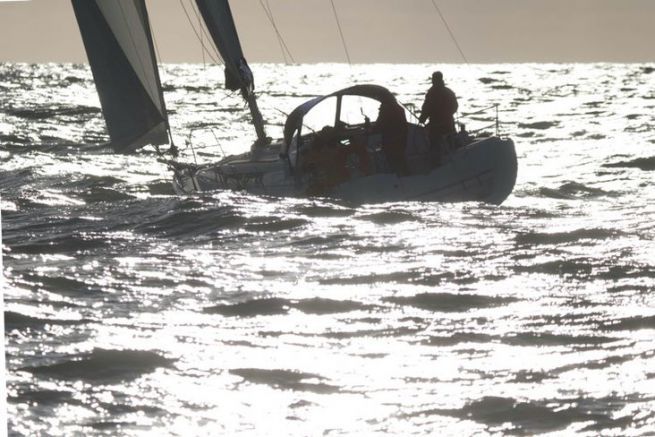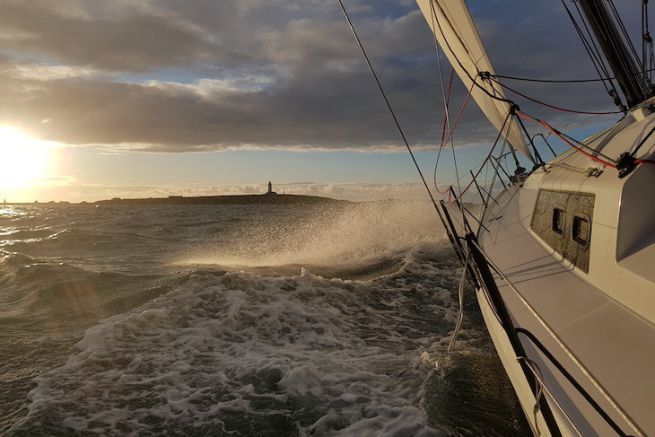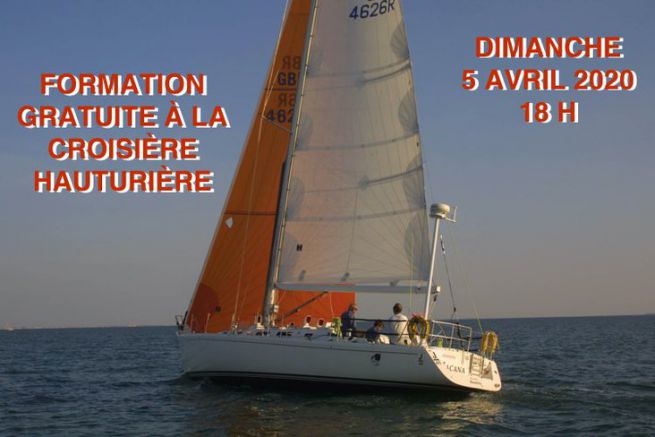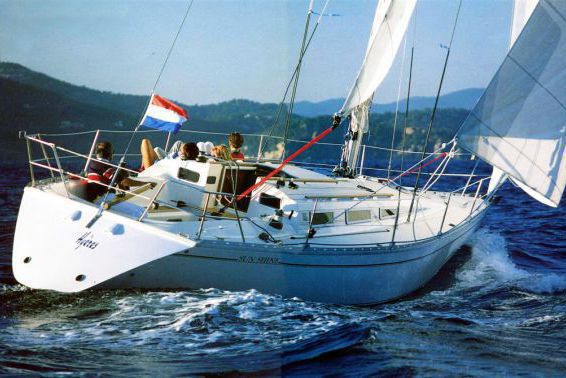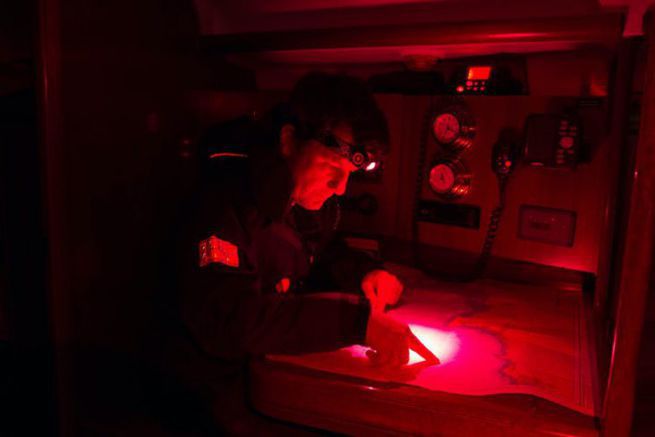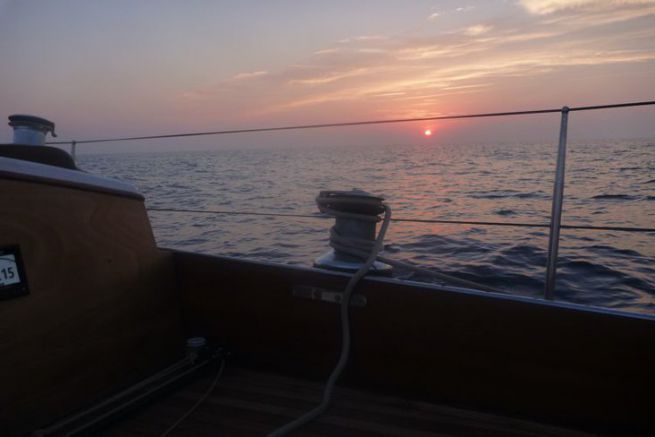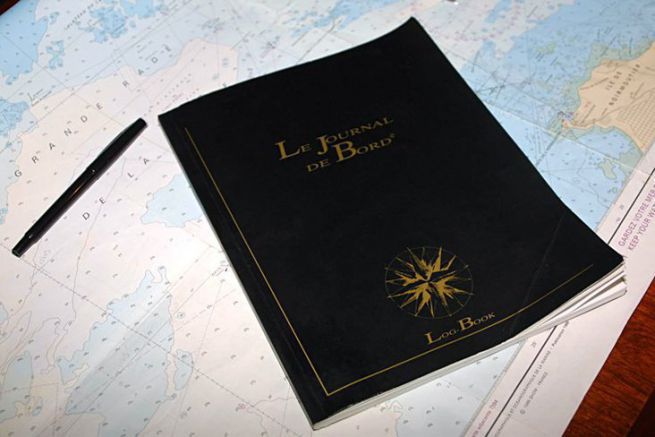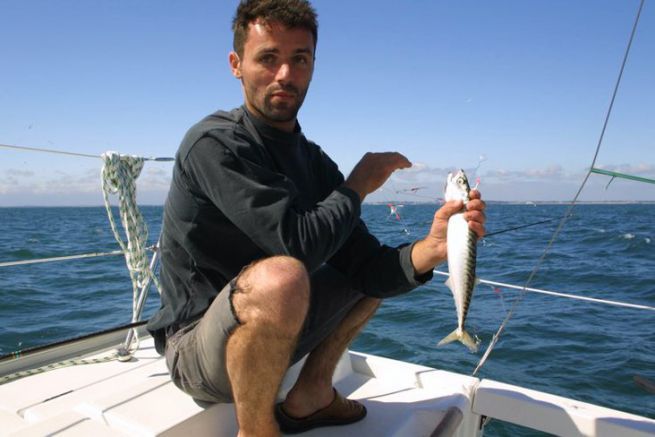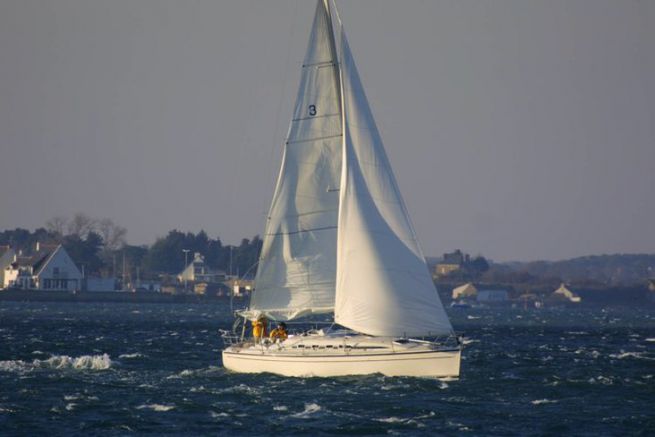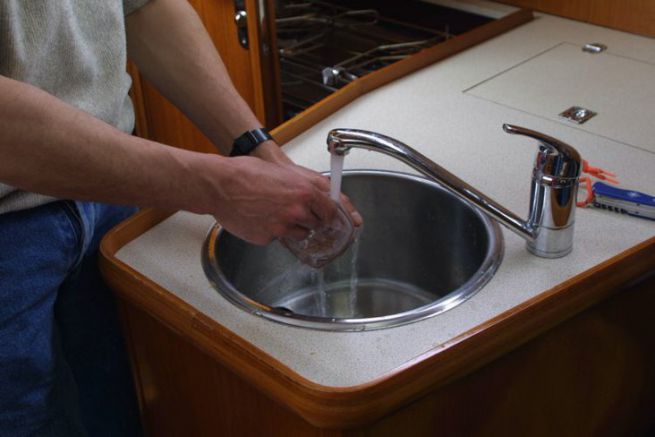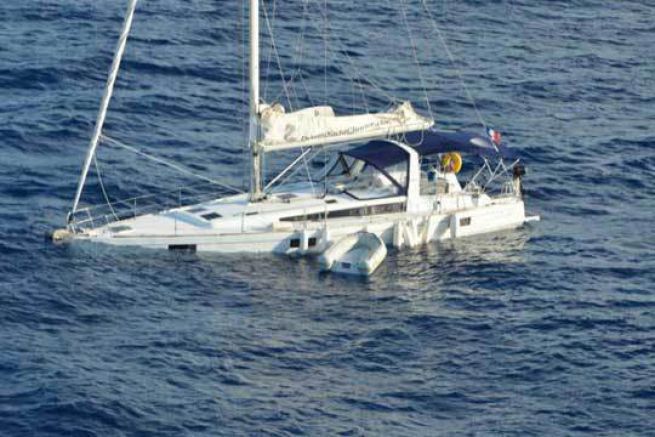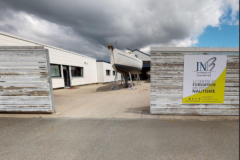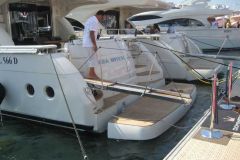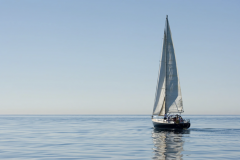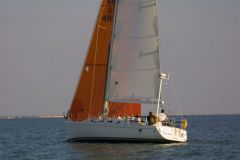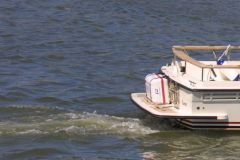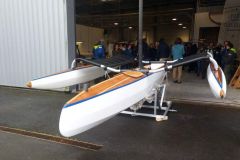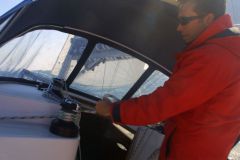Suhaili, the virtual (and slightly modernised) sister-ship of Robin Knox Johnson's yacht, left Camaret for Horta as planned on Tuesday 14th April 2020. After 8 days of preparation within the framework of our free deep-sea navigation training course we follow its progress and the adventures of the crew.
This first video - Suhaili's logbook - gives us the opportunity to address the delicate issue of wild jibing and its prevention.
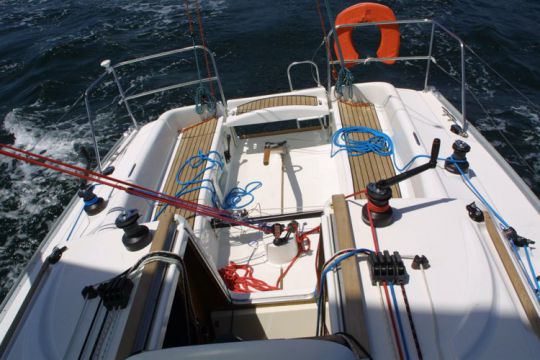
Offshore, when the wind is well established, as in the trade winds, the sea rises and the waves constantly change the angle of the boat in relation to the wind. Just a few degrees, or sometimes tens of degrees, is more than enough when you are sailing very close to the downwind to find yourself for a few moments on the wrong tack. If the mainsail inflates against the wind, it is highly likely that it will continue to move violently, sweeping across the cockpit and ending up against the opposite shrouds. In this case, the risk of injuring a crew member, breaking the mule screw and even dismasting is not negligible.
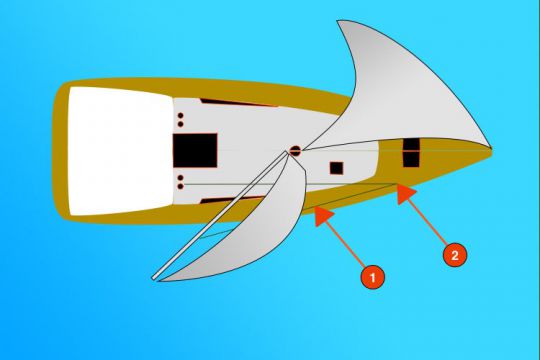
1 - Boom restraint (green)
2 - Return pulley
Rig a boom restraint, a boom brake or a mountaineer's figure 8 knot.
On board Suhaili, in the absence of a boom brake, it was therefore decided to rig a boom restraint. This end attached to the mainsheet clew passes through a block forward of the mast on deck and back into the cockpit. It is rigged like a downhaul on the spinnaker pole.
To set it up, the mainsail has to be tucked in to bring the boom within reach. Then the mainsail is hoisted again and the boom restraint is tightened.
This very simple process is much less cumbersome than a boom brake. On the other hand, you have to release the restraint at each gybe to change tack. This is not very annoying when sailing several hours (or even days) downwind, as in principle you have all the time you need to manoeuvre.
The most cautious will double the boom-brake process, and other sailors will replace one with the other. Sailors in mountaineering use a climbing knot as a brake (provided that a climbing rope, not a halyard, is used for this to be effective). The important thing to remember is that gybing on the fly is dangerous and it is necessary to be careful. Then it's up to each person to test the technique that suits them and their boat best. At sea, no one holds the truth.
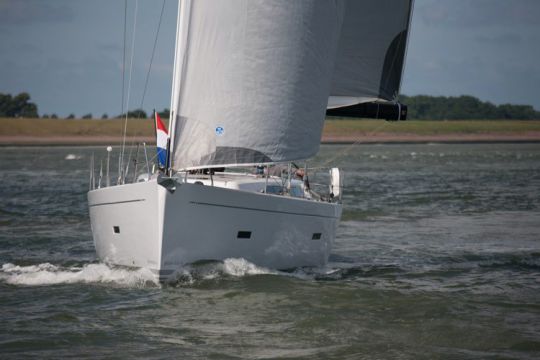
Prefer the big drop
Even with a boom restraint, it is infinitely more comfortable to sail at full beam than downwind. In fact, by lofting slightly, i.e. to be positioned at about 165° to the wind, the yacht gains in stability and speed. The best angle will depend on the sea state and the efficiency of the autopilot or helmsman. On most cruising yachts this results in a slightly longer course. But the gain in comfort and safety is such that one will not hesitate to choose this option for a long time
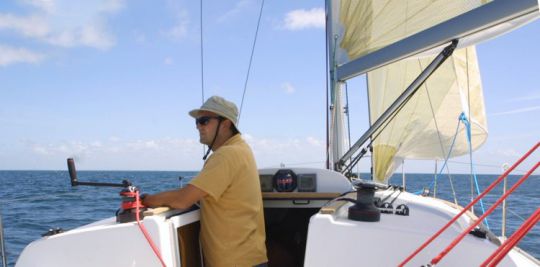
Sailing without the mainsail
On the way to the trade winds, some crews choose to lower the mainsail and rig two genoas in a scissors-shaped rig. This second genoa can be sent as a free edge on a textile forestay or on a furler. This choice definitively solves the issue of wild gybing. However, on a course where the wind direction is likely to change, it complicates the manoeuvres a little, as the genoa will have to be lowered to windward and luffed seriously to send the mainsail back as soon as the wind refuses.
Finally, when the wind increases considerably, the mainsail needs to be lowered, while a small headsail or a genoa rolled two-thirds of the way down will be enough to keep the boat going. This point of sail is also known as the leak...

